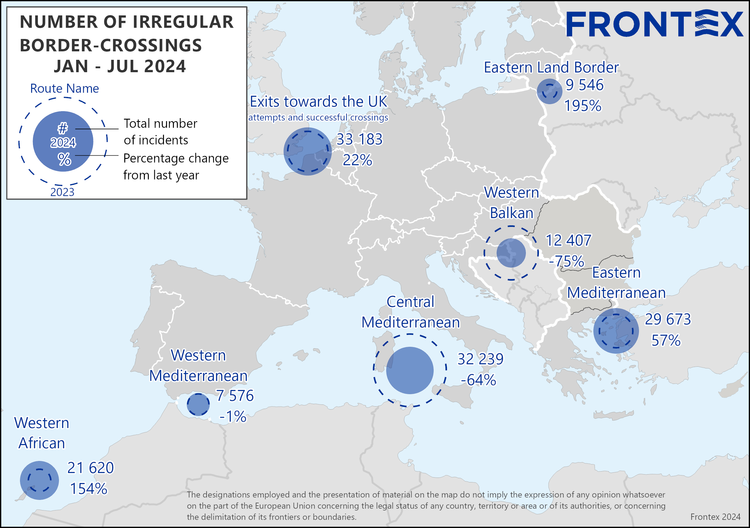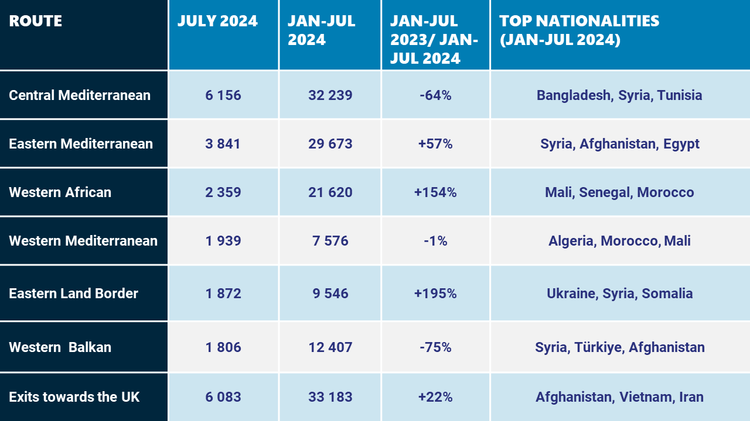The number of
irregular border crossings into the European Union in the first seven months of
2024 fell by 36% to 113 400, according to the preliminary data collected by
Frontex. The biggest drops
in irregular border crossings were seen on the Western Balkans and Central
Mediterranean routes, at 75% and 64% respectively. Frontex remains
committed to protecting the EU's external borders, with 2 900 officers and
staff involved in various operations throughout Europe.
Key highlights
for the first seven months of 2024:
- Central
Mediterranean saw a 64%
drop (y/y) in detections.
- Western
Balkans also continued
to show a strong decrease (-75%), biggest drop among the main migratory routes
to the EU.
- Eastern
Land Border and Western
African route showed the highest rises of 195% and 154%.
- Top
three nationalities this year: Syria, Mali, Afghanistan.
The Central
Mediterranean route has recorded a significant downward trend in
recent months. For the January-July period, this migratory route saw a 64% drop
in crossings to 32 200. Nevertheless, the Central Mediterranean remains the
most active migratory route to the EU. This year’s decrease
can be attributed mainly to preventive measures by the Tunisian and Libyan
authorities to disrupt the activities of smugglers. Arrivals from those two
countries account for 95% of all migrants reported on the Central Mediterranean
route.
The number of
detections on the Western Balkan route also continued to fall significantly
in the January-July period and was down as much as 75% to just over 12 400.
Meanwhile,
the Western African route continued to record unprecedented
numbers of detections, with the total of irregular migrants arriving in the
Canary Islands in the first seven months increasing by 154% year-on-year to over
21 600.
The Eastern
Mediterranean was the second most active migratory route this year, with
the number of arrivals increasing by 57% to almost 29 700.
The Eastern Land
Borders continued to note a significant number of arrivals this year with
195% increase to around 9 500.
On the Channel
route, the number of detections in the first seven months of 2024 increased by 22%
to reach 33 183.
Note: The
preliminary data presented in this statement refer to the number of detections
of irregular border crossing at the external borders of the European Union. The
same person may cross the border several times in different locations at the
external border.

